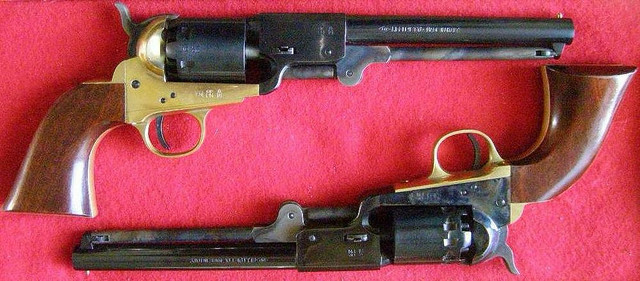sourdough
40 Cal
And, there is a historical factor that adds to the charm.
If you are speaking about ACW Confederate Colt "type" revolvers, only Schneider & Glassick and Griswold & Gunnison made "brass" frames. The original G&G frames were actually termed "gunmetal" which had a much higher copper content than, say, a G&G made by Pietta today, which accounts for the reddish color of the original G&G frames. S&G made very few of these with full octagon barrels, but G&G made over 3600 specimens, which all had part round/part octagon barrels and smooth/plain non-engraved cylinders.
Two of my Confederate replicas: Pietta G&G and Pietta Rigdon & Ansley (with a 12-stop-slot cylinder I had milled by my machinist neighbor: a non-factory-produced revolver I created using a Pietta 1851 Navy with Pietta parts).

IMO, and in the opinions of many others, brass frames do not "stretch". The problem of cylinder end play when using very warm loads is caused by the cylinder ratchet being repeatedly slammed into the brass ring around the arbor in the recoil shield, which gets imprinted in that area. At half cock there is no cylinder end play, but at hammer down and at full cock it is apparent. I don't shoot my G&G nor my S&G. I will stick to my steel frame Leech & Rigdon, Rigdon & Ansley, and Augusta Machine Works revolvers, all Pietta replicas I created from 1851 Navy revolvers using Pietta .
Regards,
Jim










